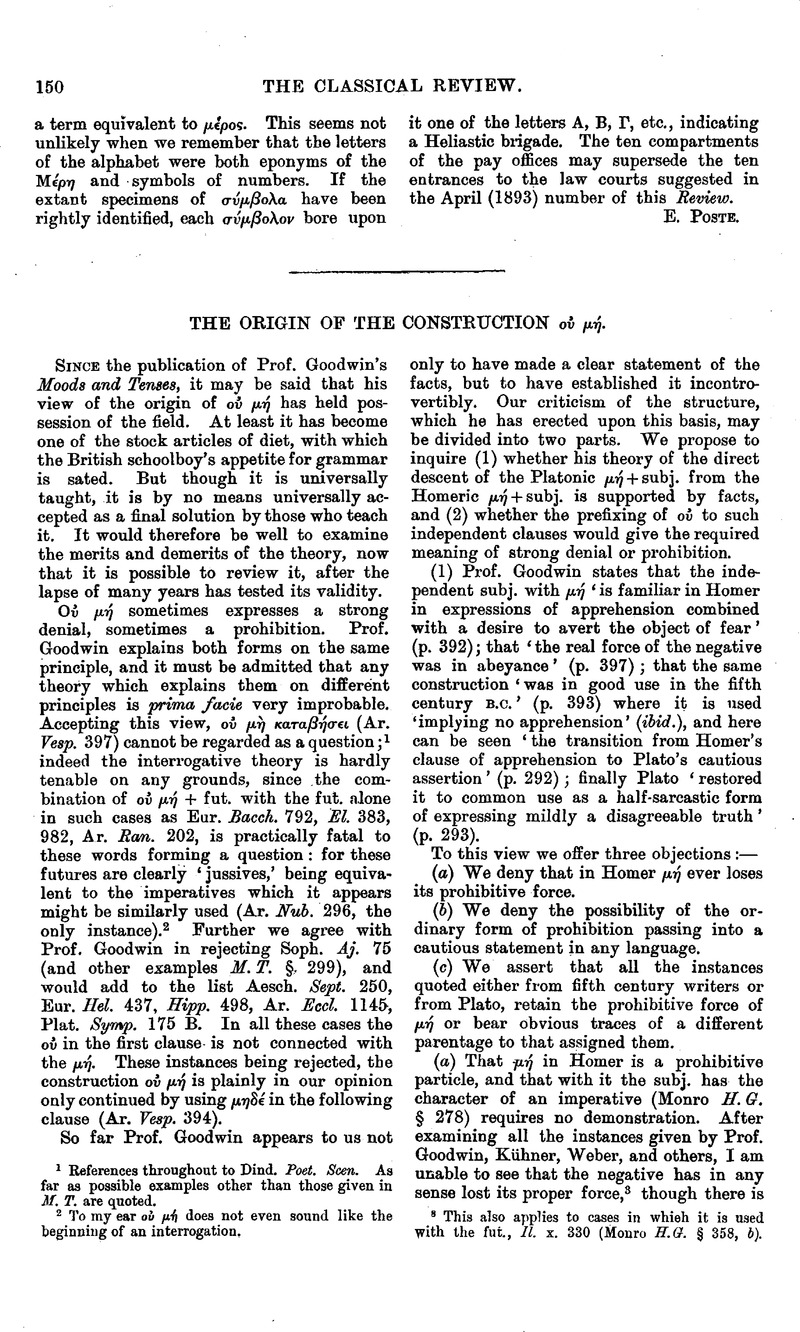No CrossRef data available.
Article contents
The Origin of the Construction σὐ μή
Published online by Cambridge University Press: 27 October 2009
Abstract

- Type
- Review Article
- Information
- Copyright
- Copyright © The Classical Association 1896
References
page 150 note 1 References throughout to Dind. Poet. Seen. As far as possible examples other than those given in M. T. are quoted.
page 150 note 2 To my ear oὐ μἠ does not even sound like the beginning of an interrogation.
page 150 note 3 This also applies to cases in whieh it is used With the fut., II. x. 330 (Monro H.G. § 358, b).
page 151 note 1 Dr. Verrall would add Aesch. Sept. 201 (183), ἔνδον δ’ οὖσα μ⋯ βλ⋯βην τιθ⋯, ‘at home she is like enough to be in the way.’ See note ad loc.
page 151 note 2 In one of these cases, Lys. 219 D, there is another verb ⋯ξαπατᾷ coordinated with ᾖ, but this does not affect the argument.
page 152 note 1 The authors include Aesch., Soph., Eur., Aristoph., Herod., Thucyd., Xen., Plato, Aeschin., Demosth., Isaeus.
page 153 note 1 I have assumed that the μἠ after verbs of fearing is the prohibitive not the interrogative μἠ of M. T. 369, 376, to which I would add for purposes of comparison Ar. Lys. 326.
page 153 note 2 Compare the construction ‘ὅπως νρ ἔσɛι,’ Eur Cycl. 595; where the dependent conjunction ὅπως clearly shows that this imperatival expression also went through a stage of subordination before it was used independently.
page 153 note 3 If I apprehend Prof. Goodwin's meaning M. T. § 263, he himself regards μἠ oὐ as necessarily dependent, or at least does not believe in the existence of any independent instance.
page 153 note 4 If in Aesch. Ag. 1640 (1618) μἠ should be read (v.l. μ∘ι, μ ν), it was probably earlier, since it is there already stereotyped.


